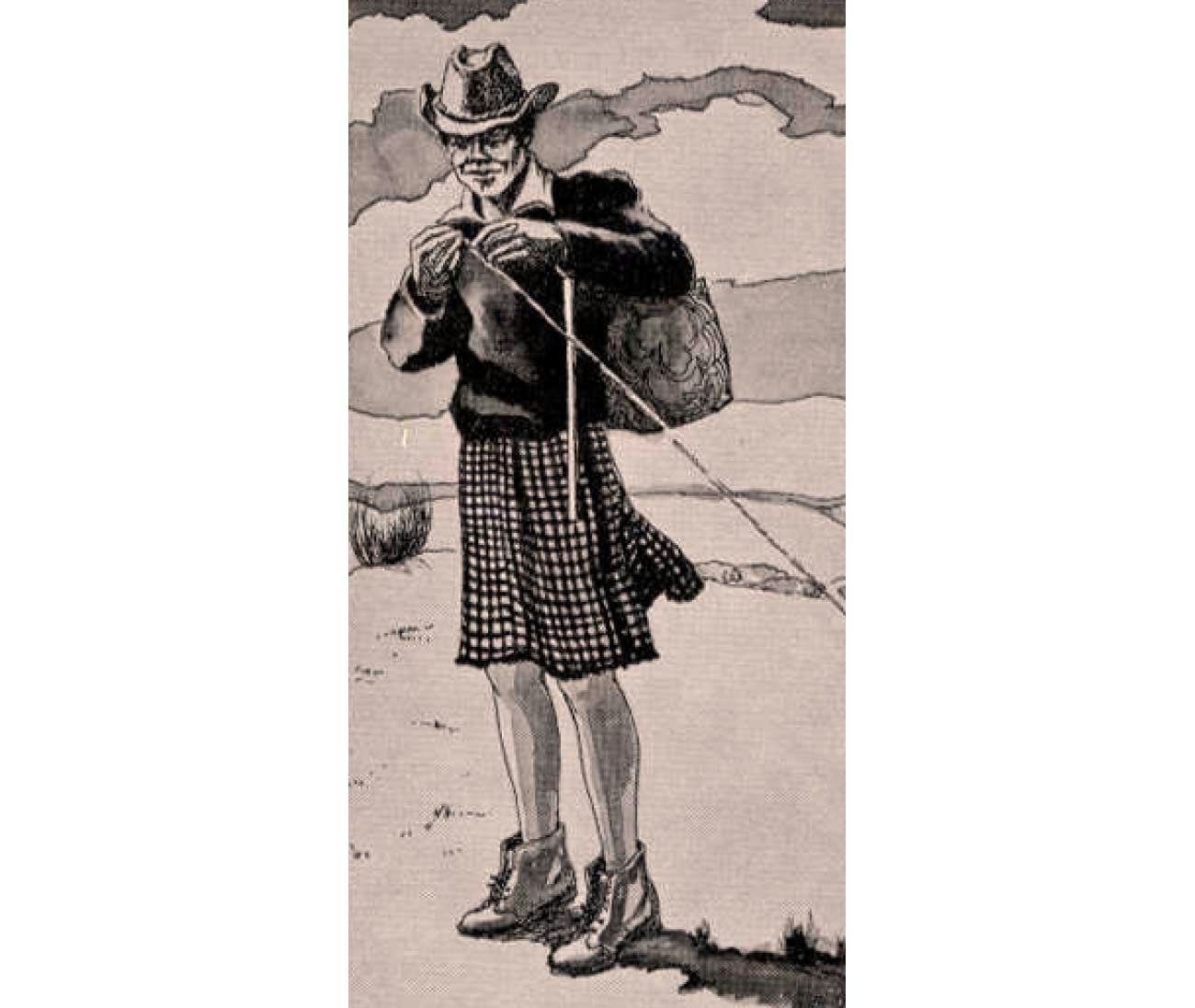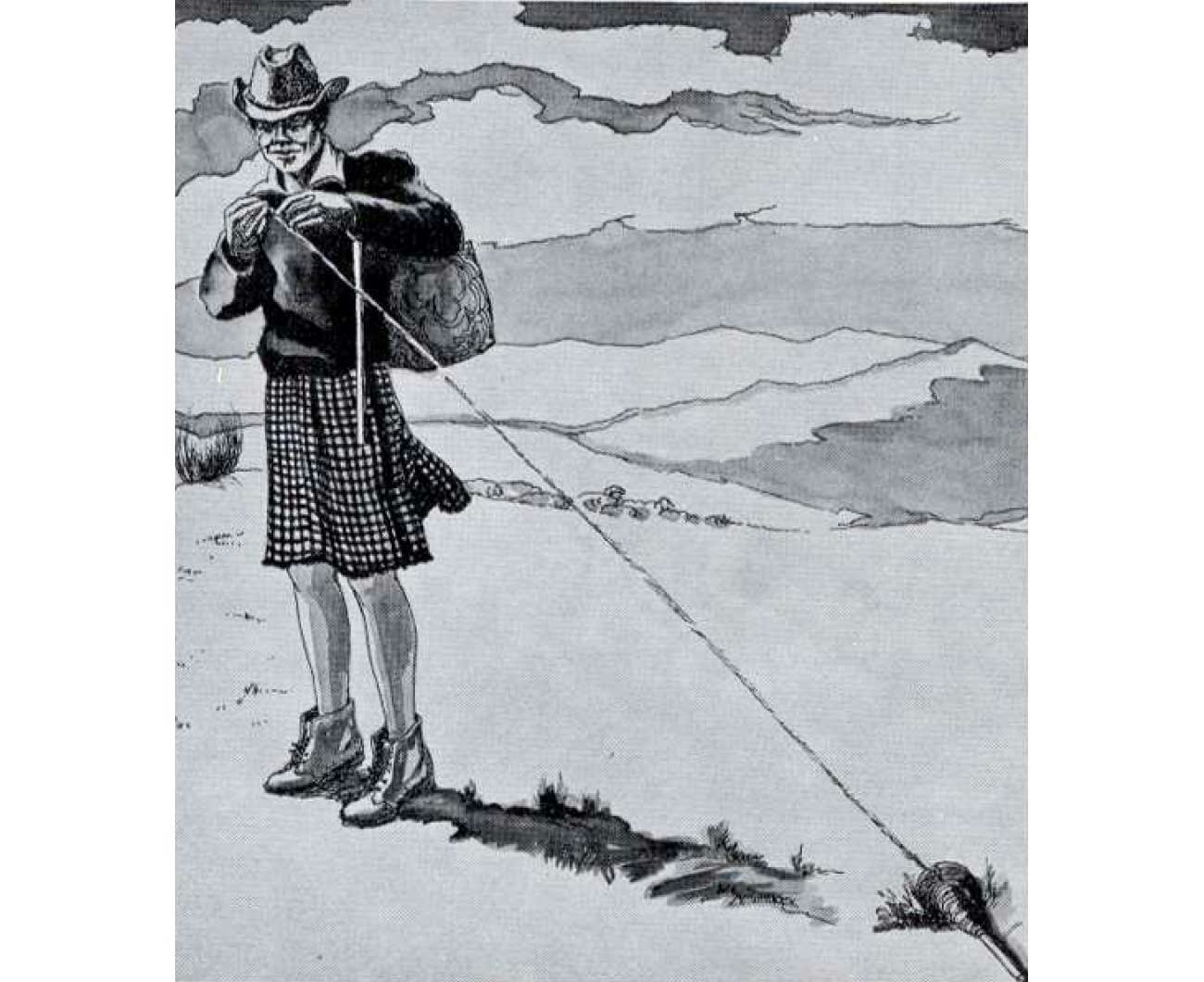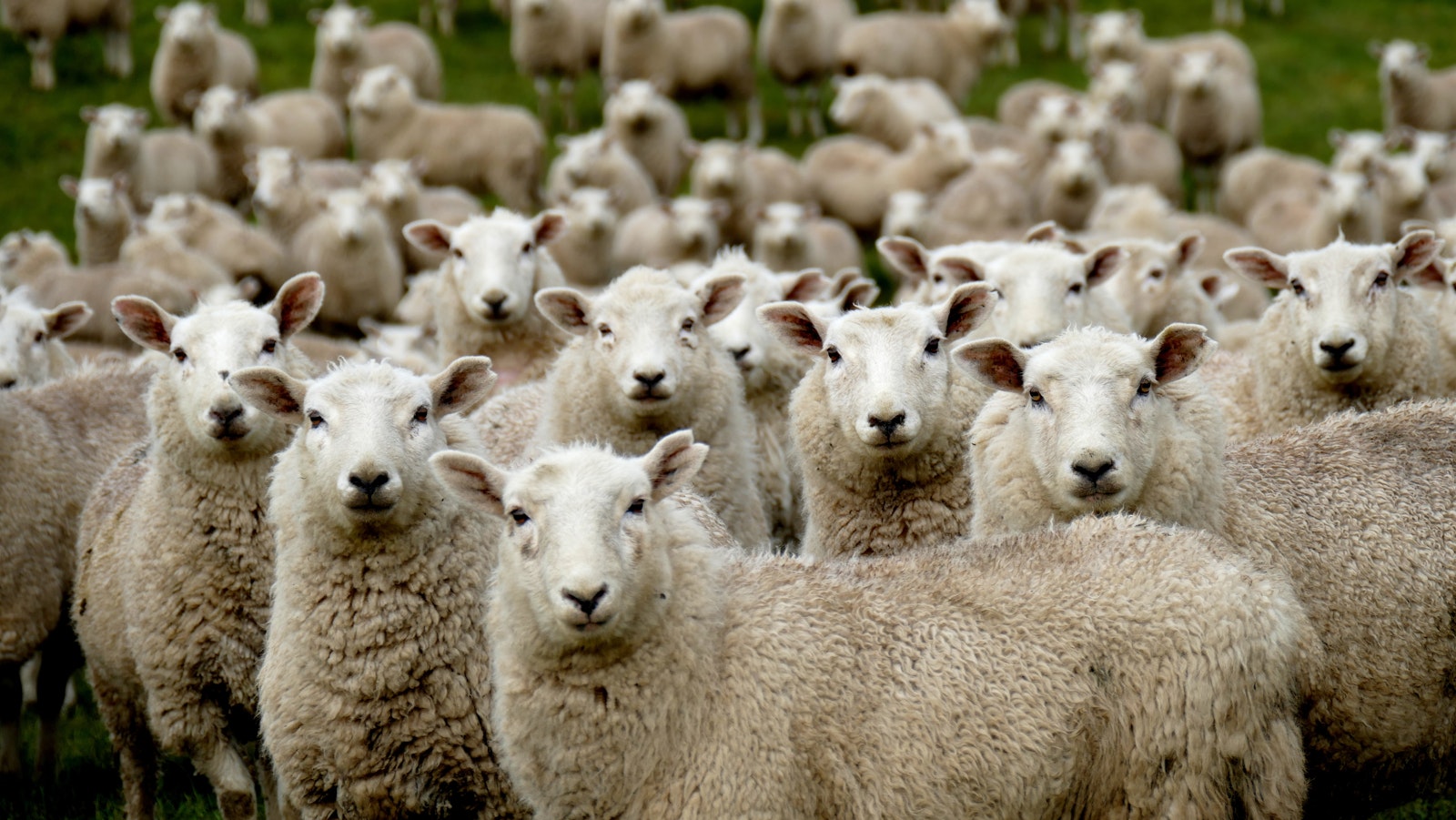Exploring Guatemala
On a Folk Art Tour to Guatemala, we stopped in a mountain pass for a picnic lunch. We noticed two shepherds tending their sheep nearby. They appeared to be true highlanders, for they were dressed in kilts. The kilt was woven of brown and natural white wool in a half-inch check design and worn wrapped about the waist to knee-length. A dark wool jacket of handwoven felted material covered a shirt, and the outfit was completed with a straw fedora and loose-fitting boot-like shoes. Our guide explained to us that we were in that part of Guatemala inhabited by the Nahuala Indians, one of the many Mayan clans. This was the distinctive masculine dress of the village.

Illustration of a Guatemalan spinner wearing a rodillera, a knee-length handwoven and handspun wool skirt worn by Guatemalan men. Illustration by Roberta Sinnock.
The men were doing something with their hands, so we approached for closer observation. One was knitting a bag and the other was holding a spindle. By signs, Harry asked if he could try the spindle. It was passed over to him. The spindle had a top-weighted whorl about three-fourths inch thick and two and one-half inches in diameter. Two slots, about one-fourth inch deep, were cut in opposite sides of the whorl. The yarn was inserted in one of the slots, and a half-hitch was made over a small knob on the end of the shaft which protruded about two inches above the whorl. The overall size of the shaft was approximately 12 inches in length and three-eighths inch in diameter. The whorl was made of a dark, heavy wood. A handcarded rolag held in the left hand was the fiber source.
Harry took the spindle and spun a length of yarn in his usual expert manner and, to our amazement, the shepherds burst into hearty laughter! When several lengths had been spun and wound on, the spindle was handed back to its owner. The shepherd then showed us how he used his tool—and we laughed then, because he had a few tricks in spinning which we had not yet encountered.
A Unique Method of Spinning and Plying
He spun out about a yard of yarn, then stooped over and gave the shaft a firm brisk roll up the bare calf of his leg. He spun a few more makes of yarn, but no more than could be comfortably held while keeping the spindle from touching the ground. He held the spindle out and allowed energy (excess twist) to build up in the length of spun yarn.
When the momentum of the spindle was just about spent, he gently swung it away from his body and let it rest upon the ground. With the excess twist built up in the yarn, he resumed his drawing motions and, using the built-up energy to do the spinning, he stepped backwards. He then wound the spun yarn over the four fingers of his left hand until he was again within a yard of the spindle. With another brisk roll up his bare calf, he again allowed the twist to build up in the already spun arm's length of yarn. Casting the spindle out upon the ground a second time, he unrolled the yarn from around his fingers. Again he spun an additional length of yarn with the built up over-twist.
Rewinding the yarn over his fingers, he gave the spindle a brisk roll up the calf of his leg for the third time and allowed twist to build up. Then, once more, he swung the spindle out upon the ground and unrolled the yarn from around his fingers as he stepped back, allowing the twist to equalize over the entire length of spun yarn, which by this time was between four to five yards in length. After another quick wrap on the four fingers, he accomplished transfer to the spindle yarn package by placing the spindle with the whorl end against his body. He released the half hitch, his right hand twirled the spindle, and his left hand gave up its temporary storage of the yarn as it was firmly wound onto the spindle. This completed the cycle. When needed, he took additional prepared fiber from a bag which he carried over his shoulder.

Notice the spindle on the ground and extra fiber to work from in the bag. Illustration by Roberta Sinnock.
Meanwhile the other shepherd was knitting his bag. In its final stages, it was purchased by one of the eager travelers. But the canny shepherd lost no time. He took from his shoulder bag a spindle and a ball of yarn slightly larger than a baseball, perhaps softball size. It was composed of two strands of spun singles wound together. Tying the double strand to the shaft of the spindle beneath the whorl, he ran the yarn through one of the slots and made a half hitch over the knob.
Holding out an arm's length, he stooped and rolled the shaft of the spindle down the calf of his leg. Using the same technique as the spinner, he let the twist build up, cast the spindle out upon the ground and used the excess twist to ply the two strands. As he stepped back, he unwound yarn from the ball until he had a soft ply. Winding up the yarn in the temporary storage stage was done by winding the plied yarn completely over the ball and fingers holding it. He followed the same procedure as the spinner: three spins, stepping back and plying with the over-twist, temporary storage of the yarn over the left hand, and then the final winding of the plied yarn onto the spindle yarn package.
We have tried this method of spinning and plying since returning home and find it is a very effective way to spin and ply in an outdoor situation. We hope our readers will try it sometime.
Olive and Harry Linder are the authors of Hand Spinning Cotton.
This article was originally published in the 1978 issue of Spin Off.

